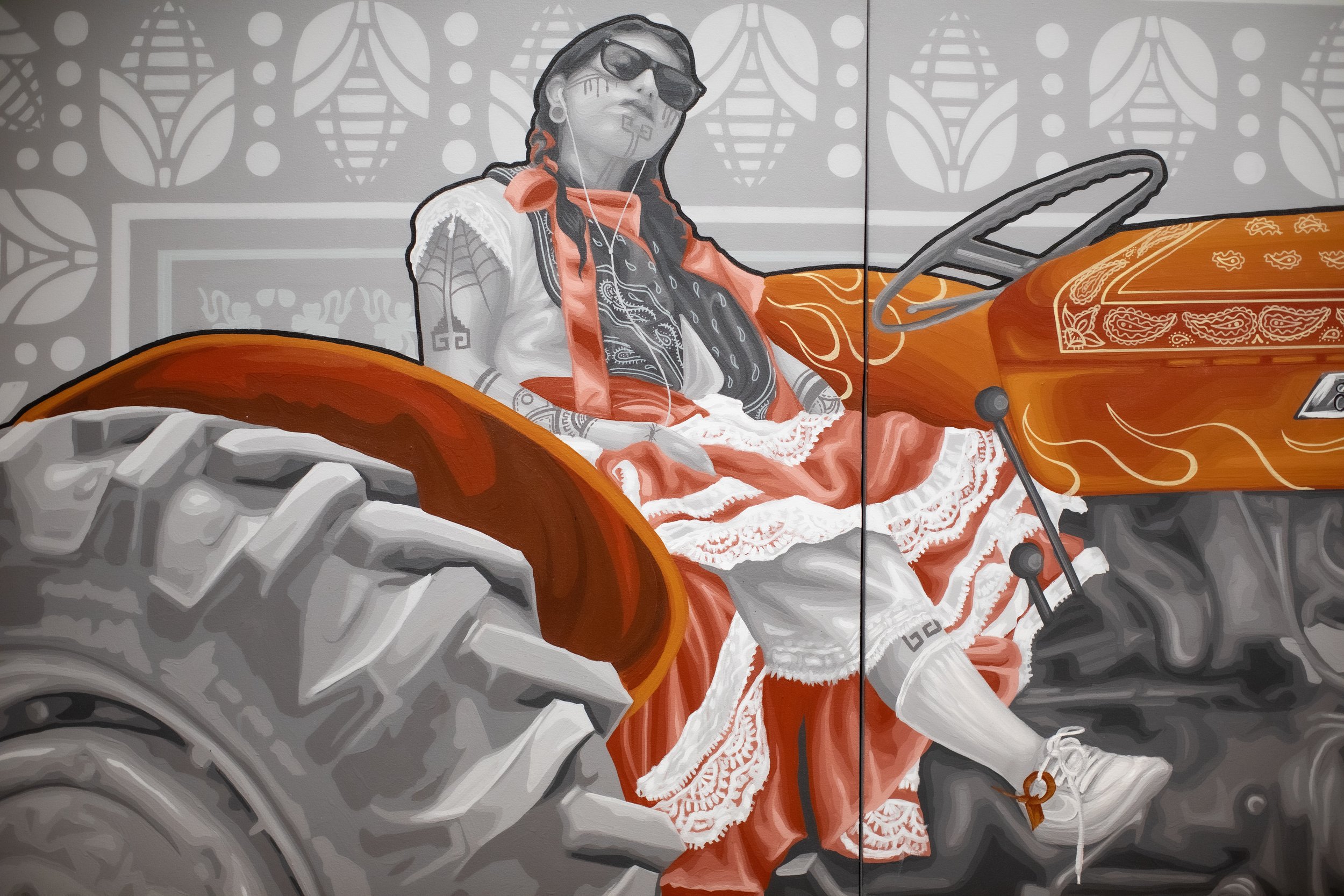-

Tlacolulokos (Oaxaca)
ARTIST COLLECTIVE
(e. 2006)—Dario Canul (b. 1986, Tlacolula, Oaxaca, Mexico) and Cosijoesa Cernas (b. 1992, Tlacolula, Oaxaca, Mexico). Tlacolulokos is a collective of self-taught artists that formed during the uprisings of 2006 in Oaxaca. Tlacolulokos have shown internationally, including exhibitions in Lille, France, the LA Public Library, and MOLAA Long Beach. They currently live and work in Tlacolula.
-

Carlos Cortéz Koyokuikatl
POSTER ARTIST
(1923 - 2005) Carlos Alfred Cortéz Redcloud Koyokuikatl is a soap-box artist-poet and citizen activist of Chicago and the world. Cortéz is best know for his powerful political cultural expression, particularly his radical graphics and poems. Motivated by his partial Mexican-Indian heritage, he identifies with and counts himself a member of the Native American and Mexican American communities. Cortéz had devoted his life to advancing “peace and justice.” He has championed social reforms, most notably, the peace, environmental, Native American, and Mexican American social movements. For five decades his rebel verse and striking woodcut and linocut prints have summoned workers and draftees of the world to combat capitalism, militarism, and war, and to construct a libertarian socialist world of abundance, social justice, creative leisure, and peace.
-

Sabino Guisu (Juchitán de Zaragoza, Oaxaca)
ARTIST
Sabino Guisu (b. 1986, Juchitán, Oaxaca) Coming from a family of artisans dedicated to pottery, his creative training began through careful observation of nature, the rites and customs of the Zapotec culture, and the heritage of his artist father.
In his youth, he settled in Oaxaca City, where he worked as a librarian at the Institute of Graphic Arts and studied Plastic Arts at the Faculty of Fine Arts of the UABJO. However, most of his creative vision has been self-taught. His pieces result from research in different fields, such as anthropology, religion, symbolic psychology, and art history.
Sabino's work is influenced by the Zapotec culture and contemporary art. His practice comes from a continuous reflection between nature, culture, and the sacred. His subject matter incorporates magic, the power of dreams, imagery, mysticism, and transcendental worldviews.
His inspiration often comes from the shapes and signs of pre-Hispanic cultures and the art of peripheral cultures, which he updates and makes dialogue with the present phenomena. From the primordial gestures of smoke and fire, through the act of placing drawings and signs on the walls of caves, as well as the elaboration of ritual artifacts, to the application of current profane technologies, in which light intervenes as A metaphor for the cosmos, Sabino has been leaving traces of an integrating vision, in which everything is harmoniously fused.
Through art, Sabino urges a connection to nature, sacred rituals, and transcendence, where symbols become a performative part of human action to build a world of meaning.